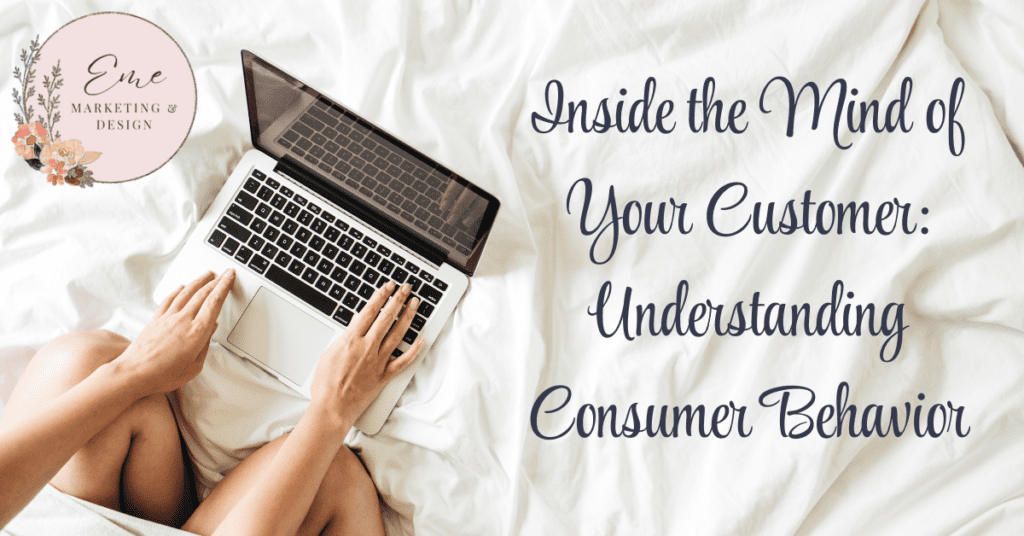
Understanding consumer behavior is paramount for any company aiming to thrive in the ever-evolving business landscape. Consumer behavior refers to the study of how individuals decide to spend their available resources (time, money, effort) on consumption-related items. It encompasses the entire process of purchasing, including pre-purchase and post-purchase activities. By diving deep into the psychology behind consumer actions, businesses can tailor their strategies to meet the needs and wants of their customers more effectively. This blog explores the critical aspects of consumer behavior, offering insights into how businesses can better understand and influence their customers.
The Psychology of Consumer Behavior
1. Motivation and Needs
At the core of consumer behavior lies motivation, the driving force behind every purchase decision. Abraham Maslow’s hierarchy of needs is a foundational theory that explains how human needs influence consumer behavior. According to Maslow, human needs are arranged in a hierarchy from basic physiological needs (like food and shelter) to higher-level psychological needs (like esteem and self-actualization).
Businesses can leverage this understanding by aligning their products and marketing strategies with the specific needs their target customers are trying to fulfill. For instance, luxury car brands like Rolls-Royce target customers seeking status and esteem, while budget-friendly brands like Toyota focus on reliability and basic transportation needs.
2. Perception
Perception is how consumers interpret and make sense of information they encounter. It is influenced by three perceptual processes: selective attention, selective distortion, and selective retention. Consumers are bombarded with a vast amount of information daily, and they use these processes to filter and manage the data.
- Selective Attention: Consumers only pay attention to messages that align with their interests and needs. Businesses need to create eye-catching, relevant content to grab consumer attention.
- Selective Distortion: Consumers interpret information according to their preconceptions. Marketers should ensure their messages are clear and reinforce positive brand associations.
- Selective Retention: Consumers remember messages that are meaningful to them. Consistency in branding helps in making a lasting impression.
3. Learning and Experience
Learning affects consumer behavior by changing a person’s behavior through experiences and information. Behavioral learning theories, such as classical and operant conditioning, explain how consumers develop preferences and loyalty.
- Classical Conditioning: Associating a brand with positive stimuli can condition consumers to respond favorably. For example, Coca-Cola often associates its brand with happiness and celebration.
- Operant Conditioning: Rewards and punishments shape behavior. Loyalty programs and discounts are practical applications of this theory, encouraging repeat purchases.
Experiential learning, on the other hand, involves consumers using products and forming opinions based on their experiences. Offering samples, trials, and excellent customer service can lead to positive experiences that drive loyalty.
4. Beliefs and Attitudes
Beliefs and attitudes are long-lasting evaluations of people, objects, advertisements, or issues. They significantly influence consumer behavior as they form the basis for their decisions.
- Beliefs: These are the thoughts consumers have about a product or brand. A company must manage consumer beliefs by providing accurate information and addressing misconceptions.
- Attitudes: These are overall evaluations that can be positive or negative. Changing consumer attitudes is challenging but can be achieved through persistent, consistent marketing efforts that reshape perceptions.
Social Influences on Consumer Behavior
1. Family
Family is a primary influence on consumer behavior. Individuals are influenced by their family’s consumption patterns and preferences from a young age. Family members often act as role models, and their choices can significantly impact purchasing decisions.
Marketers can target family units with campaigns that appeal to all members or focus on specific roles, such as children influencing the purchase of toys or snacks and parents deciding on household appliances or vacations.
2. Reference Groups
Reference groups, such as friends, colleagues, or celebrities, also play a critical role in shaping consumer behavior. These groups provide points of comparison and sources of information.
- Membership Groups: Groups to which an individual belongs, like a social club, can influence their purchasing habits.
- Aspirational Groups: Groups that individuals aspire to join, such as high-status social circles, can drive purchases that align with the group’s values and behaviors.
- Dissociative Groups: Groups individuals do not want to be associated with can also influence behavior, leading consumers to avoid certain products.
Leveraging influencers and testimonials from reference groups that resonate with the target audience can enhance the effectiveness of marketing campaigns.
3. Social Class
Social class, defined by factors such as income, education, and occupation, affects consumer preferences and behaviors. Different social classes have varying access to resources and distinct consumption patterns.
Luxury brands often target higher social classes with exclusive, premium offerings, while mass-market brands may cater to middle and lower classes with affordable and practical products. Understanding the nuances of social class can help businesses position their products appropriately.
4. Culture and Subculture
Culture encompasses a society’s values, beliefs, customs, and behaviors. It shapes consumers’ worldviews and consumption habits. Within larger cultures, subcultures—groups of people with shared values within a broader culture—can also influence behavior.
For instance, the growing emphasis on sustainability in Western cultures has increased the demand for eco-friendly products. Brands that align with cultural values and address subcultural needs can connect more deeply with their audiences.
Personal Influences on Consumer Behavior
1. Lifestyle
A person’s lifestyle reflects their activities, interests, and opinions and is a significant determinant of consumer behavior. Marketers use lifestyle segmentation to identify and target specific groups based on shared lifestyle traits.
For example, outdoor adventure brands target individuals who enjoy hiking, camping, and other outdoor activities. By understanding lifestyle preferences, businesses can create products and messages that resonate with their audience’s daily lives and passions.
2. Personality and Self-Concept
Personality traits, such as extroversion, agreeableness, and conscientiousness, influence consumer preferences and choices. Additionally, self-concept—how individuals perceive themselves—affects their buying behavior.
Brands often use personality archetypes to appeal to specific consumer segments. For example, Harley-Davidson’s branding appeals to consumers who see themselves as rebellious and adventurous. Aligning brand personality with the target audience’s self-concept can create a solid emotional connection.
3. Age and Life Stage
Age and life stage significantly impact consumer behavior. Different age groups have distinct preferences, needs, and buying capabilities. Life stages, such as being a student, parent, or retiree, also influence purchasing decisions.
For instance, young adults may prioritize fashion and technology, while older adults might focus on health and retirement planning. Understanding the specific needs of each age group and life stage allows businesses to tailor their products and marketing strategies accordingly.
The Role of Technology in Understanding Consumer Behavior
1. Data Analytics
Advancements in technology have revolutionized the way businesses understand consumer behavior. Data analytics allows companies to gather and analyze vast amounts of data on consumer actions, preferences, and trends.
Businesses can uncover patterns and insights that inform product development, marketing strategies, and customer service improvements by leveraging data analytics. Personalized marketing, predictive analytics, and customer segmentation are just a few examples of how data analytics can enhance understanding and engagement.
2. Social Media
Social media platforms provide a wealth of information on consumer behavior. Consumers share their opinions, preferences, and experiences online, offering valuable behavioral insights.
Businesses can use social media listening tools to monitor conversations about their brand and industry, identify trends, and engage with their audience. Social media also allows for direct consumer interaction, fostering relationships and building brand loyalty.
3. Artificial Intelligence (AI) and Machine Learning
AI and machine learning technologies enable businesses to predict consumer behavior more accurately. These technologies analyze large datasets to identify patterns and make recommendations.
For example, e-commerce platforms use AI to provide personalized product recommendations based on past behavior and preferences. Chatbots and virtual assistants enhance customer service by offering instant, customized support. AI-driven insights help businesses stay ahead of consumer trends and meet evolving demands.
Final Thoughts on Consumer Behavior
Understanding consumer behavior is crucial for businesses aiming to create successful marketing strategies and foster long-term customer relationships. By delving into the psychological, social, and personal factors influencing consumer decisions, companies can better anticipate and meet their customers’ needs. Additionally, leveraging technology to gather and analyze consumer data offers unprecedented opportunities for personalization and engagement.
As consumer preferences and behaviors evolve, staying attuned to these changes and adapting strategies will be key to maintaining a competitive edge. By truly understanding what drives their customers, businesses can build stronger connections, enhance customer satisfaction, and ultimately achieve sustained success in the marketplace.
Need expert guidance?
Struggling to find the solutions you need? Let our team assist you.




